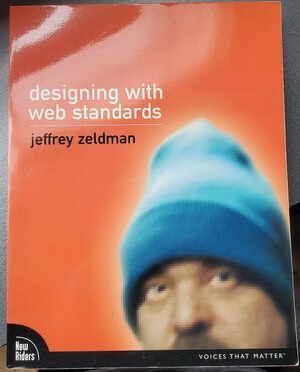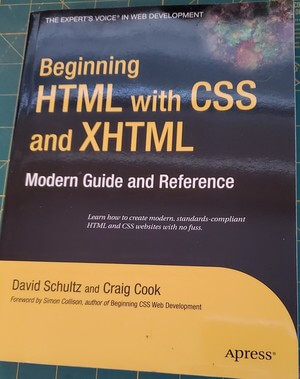My name is Craig Cook and I’ve been making websites since 1999. Or even before then if you count a truly cringe-worthy GeoCities site I made in 1997. But I’ve been doing it for a living since 1999. I got my start in graphic design but entered the job market just as the dot-com boom was booming and everybody wanted a website. So I said, sure, I can do that. And I’ve been making websites ever since.
Though I always considered myself a designer first and foremost, I found that I really liked the hands-on aspects of writing code. Yeah, I admit, I’m one of those “web designers should know how to code” people and I’ll stand by it. I should also add that I think coders should know some design fundamentals, too. While I gradually moved into a pure developer role, I always kept in touch with my design roots. It has helped me collaborate well with visual and UX designers. And every once in a while I still get to flex my design muscles.

In the early days, like everyone at that time, I built sites with tables
and spacer gifs and font tags. It was just the way things were.
Then in 2003, I read
a review of Designing with Web Standards on Slashdot,
and subsequently ordered and devoured that book. It completely changed my
approach to building for the web, and ignited a new passion for web standards,
semantic HTML, and accessibility. I had never heard the term “presentational
markup” before but suddenly I had a strong opinion on the matter (I’m not
a fan). Since then I have tried to make websites anyone can use, regardless of
their browser, device, connection speed, language, geography, or physical
abilities.
Books

In 2007 I had the opportunity to write my own book on web standards, or at least part of one. An editor asked me to contribute four chapters to Beginning HTML with CSS and XHTML: Modern Guide and Reference, published by Apress, though I ended up writing six chapters in all. I’m actually not sure how well or how poorly that book sold. Considering I never earned any royalties, I’m betting on poorly.
And yet, Apress still needed a beginning-level book in their web development curriculum. So a few years later when it was time for a second edition, they asked if I was interested in returning to update it. I hadn’t been satisfied with how that first book turned out and part of me wanted to redeem myself, so I said yes. In the short time since the previous book had been published, XHTML had already fallen out of fashion and HTML5 had burst onto the scene. The first edition was mostly irrelevant, and it was immediately clear that rather than a mere second edition update, a whole new book was called for.

That new book became Foundation HTML5 with CSS3, published in 2012 by Friends of ED (an imprint of Apress). Writing it was… an experience. As rambly and long-winded as I appear to be, technical writing is not actually my comfort zone. I have to be in the right headspace to do it, and I constantly edit and rewrite myself before I decide it’s acceptable. I was also writing about a pretty new standard, some of which was still being defined as I was writing about it. It took extensive research and testing and lots of obsessive copy-editing. And I was very, very slow.
When I was already months behind schedule, with the editor breathing down my neck, they suggested bringing in another author to help share the load, in exactly the same way I was recruited to contribute to the previous book. My esteemed friend and colleague Jason Garber graciously agreed to fill in a few chapters to help get it over the finish line and the book was finally published nearly a full year after the original target date. I swore I would never write another book, ever again. So far I’ve kept that promise, though I have been tempted a few times… Never earned any royalties on that one, either.
What’s up with the fish?

I’ve been using this image of Blinky, the three-eyed mutant fish from The Simpsons, as my avatar online seemingly forever. I created a Flickr account in 2004, which was my first real foray into what would become social media. While I was going through the initial setup and digging around in account settings, I was presented with the opportunity to change my profile avatar from the default gray block to something a little more personal. I couldn’t think of anything original offhand, but I happened to have a picture of Blinky on my hard drive, I don’t even remember why. So I uploaded it with every intention of eventually switching to something else.
That Flickr account remained unused for months, mostly because I didn’t have a decent digital camera, but also because I didn’t have any contacts to see any pictures I shared anyway. Then I went to my first SXSW Interactive in 2005, having bought a compact digital camera for the trip, and I took a bunch of pictures and met a bunch of people, so I finally had a reason to use Flickr. But I had never gotten around to changing my avatar. Blinky stuck.
Over the years, as I made more accounts on other social networks, Blinky just became my default avatar. People learned to recognize him as me, and I grew quite fond of him myself. I even started making custom variations for special occasions like Halloween and Free Comic Book Day.

So the story is that there is no story. Although I am a Simpsons fan, there is no special significance to this fish. It was a completely arbitrary, in-the-moment decision that evolved into a personal brand. I’m just glad I didn’t use something even weirder.